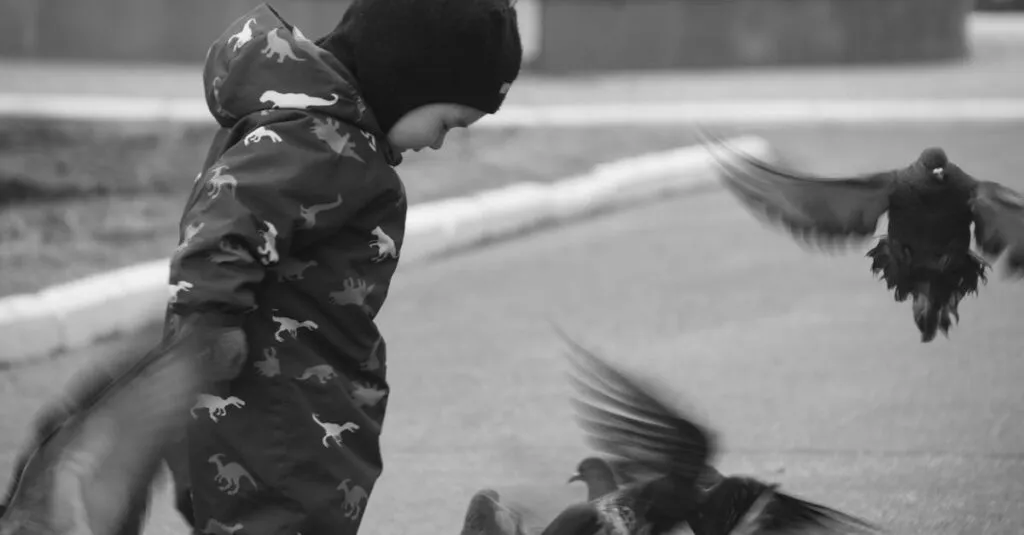Nature as a Classroom
Nature offers endless lessons. Its gentle landscapes teach patience and tranquility, perfect for fostering forgiveness. Picture your child watching a squirrel scurry or listening to birds chirp. These experiences instill calmness and responsibility.
Nature becomes a teacher, showing children how patience leads to understanding and kindness. Consider regular nature walks as a way to gently introduce these concepts. Discuss what they see and feel, connecting it to forgiveness.
Can the tree they love provide shade after shedding leaves? Probably! Relate this cycle to forgiving and moving on, teaching growth through perceived loss. Plus, it’s a sneaky way to tire them out before nap time!

Mindfulness in the Forest
Mindfulness isn’t just for adults amidst busy schedules. Even preschoolers can learn to pause and breathe. As you walk through the forest, guide your child to focus on little things: leaves under their feet or the rustle of the breeze.
Each step can be a moment of introspection, providing clarity and calmness. These mindfulness exercises naturally dovetail with lessons of forgiveness. Encourage them to breathe deeply and release negative feelings, letting them float away like seeds in the wind.
Trust in your child’s ability to adapt to these mindful moments because they often remind adults of pure, uncomplicated joy.

Forgiveness through Leaves & Breeze
Take time to pick leaves of different colors and shapes. Explain how each leaf, just like feelings, is unique. Let your child gather these leaves, saying goodbye to each as it falls to the ground.
Share a story of the leaves’ journey, much like how letting go of grudges can lead to new growth. Find humor in a leaf that won’t fall, likening it to clinging to anger. Laugh together as it eventually floats down, teaching that forgiveness is an act of freedom, captured in cracked smiles and scattered leaves.

Embrace the lesson that each leaf carries; in their journey, we find a reflection of our own paths toward forgiveness and growth.
Embracing Emotions with Nature
As you meander through park trails, use nature as a backdrop to discuss emotions. Teaching forgiveness also involves allowing children to embrace and articulate their emotions. Point out how thunderstorms pass, leaving vibrant rainbows. Children can learn that even stormy feelings pass when embraced and understood.
Inviting them to express how they feel deepens their emotional awareness. Make it a game: pretend every rain cloud is a bad feeling floating away, leaving room for sunshine. Soon they’ll express and release emotions creatively, chuckling along with you.

Creating a Mindful Walking Routine
Establish a mindful walking routine. Make it a date with nature! Consistency builds both anticipation and understanding of these practices. Select new paths each time, sparking curiosity and new learnings.
- Discuss animals they meet or sounds they hear.
- Remind them of times they’ve forgiven, like sharing toys with a friend again after an argument.
- Forge a connection between forgiving and the continuous, ever-changing trails they explore.
And just like how paths lead to new places, forgiveness can lead to surprising new friendships.

Invite Your Child to Talk about Feelings
Open lines of communication about feelings. Walks provide time away from distractions to allow children to share. Encourage them to voice any grudges or anger. Making it a non-judgmental conversation gives them confidence in expressing and processing their feelings.
Suggest visualizing negative emotions as rocks. Leave those rocks on the trail along with their grudges. Wave goodbye to them, symbolizing the act of forgiveness. Such practices empower children with emotional management tools, making forgiveness a natural choice rather than a challenging task.
Tips for Encouraging Open Conversations:
- Choose a quiet time for walks without distractions.
- Use open-ended questions to facilitate discussion.
- Create a safe space for sharing feelings without judgment.
- Encourage your child to visualize and express their emotions creatively.

